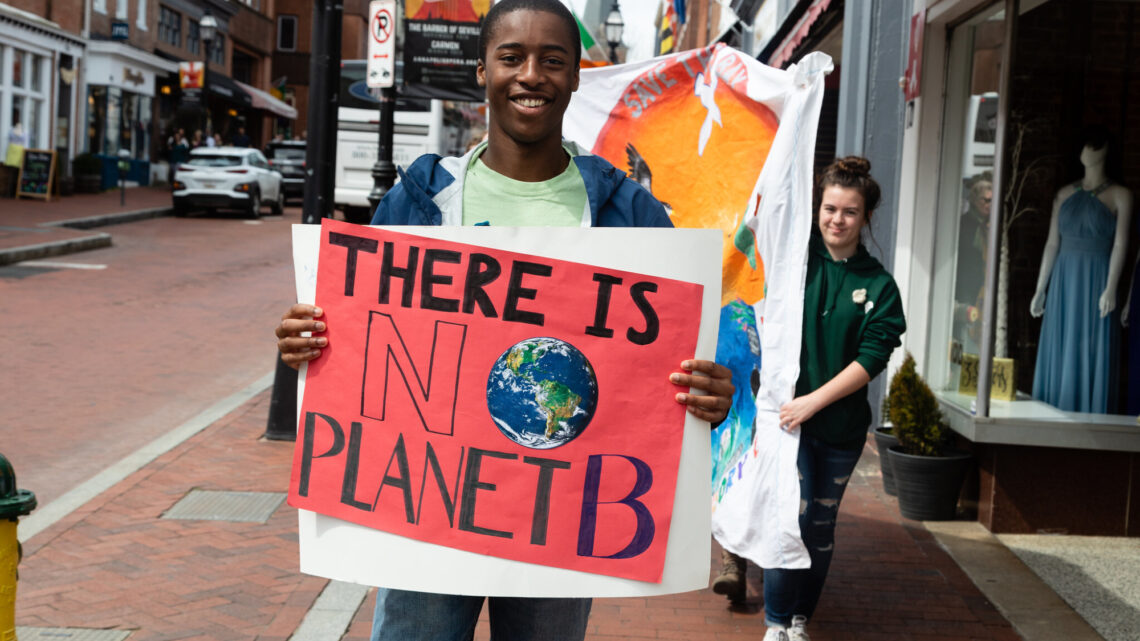Climate Change Action

Schools are in a unique position to make a significant impact on climate change. The United State’s public school system is composed of over 100,000 schools, is one of the largest public energy consumers, operates the largest mass transit fleet, and serves over 7 billion meals each year resulting in 530,000 tons of food waste. If climate change education and sustainability practices are embedded in schools, there is an opportunity for a significant reduction in greenhouse gas emissions.
Action can start in a classroom and advance to the school district. Research has shown that the ideal scale for meaningful climate action that reaches a positive cost-benefit occurs between 10,000 and 100,000 people—which is the size of many school districts. Educating students on climate change is also a powerful solution. Students have a lot of influence on those close to them and can shift public mindset, and education can shift their own daily decisions and reduce their lifetime carbon footprint.
Many of the actions listed on Bay Backpack are climate change solutions like those focused on reducing energy use and waste and protecting or creating habitats that act as carbon sinks. Project Drawdown is also a great source for evidence-based climate change action ideas.
Connecting to Issue Investigation
A variety of investigations can inform climate change solutions. Students can investigate the current and predicted climate change impacts in their community, interview the community on their understanding and thoughts about climate change, or investigate the amount and source of emissions. With a variety of climate change actions available, students can select the action that is appropriate and attainable for them.
For those working towards green school awards, this action can help advance environmental and sustainability education by helping students understand the human impact on the environment and learning how they can make a difference. This action can also reduce a school’s environmental impact.
Facilitating Student Action
Students should continue to have opportunities to share ideas and opinions throughout the process of identifying, planning, and implementing action. Listed here are just a few ways students can stay engaged while working on this solution—but there are many more! The complexity of each activity/task can be adjusted for each grade level.
Protect - students can protect habitats that serve as carbon sinks and/or help protect the community from climate change impacts (ex. wetlands buffering against storm surges)
Create - students can increase an area's capacity to serve as a carbon sink by choosing better plants. New habitats can also have the goal of helping wildlife adapt to the changing climate or making the community more resilient to climate change impacts (ex. shade from trees helping with higher temperatures).
Educate - students can educate others on the causes and impacts of climate change and what they can do to help.
Advocate - students can advocate to the town council or school board for more sustainable practices that reduce greenhouse gas emissions. The school board and administration can also get involved with embedding climate change education into every classroom.
Monitor - students can monitor a variety of things related to climate change like energy consumption, food waste, public opinion, and impacts and use that information when they talk with others or to inform their actions.
Share and Celebrate - students can share their work with the school community by giving presentations, creating displays, or writing and delivering morning announcements. Students can also write articles, press releases or invite reporters from the school paper and the local newspaper.
Climate Change Action Resources
Drawdown Ecochallenge is a community from around the world working together on climate change action. The challenges are based off of the Project Drawdown Solutions. Students can join individually, as a class, or larger team.
Climate Generation has a wealth of resources to advance climate change education and resources. Check out their youth action ideas and curriculum.
The K12 Climate Action Plan includes ideas of how schools and school districts can mitigate, adapt and educate around climate change. The guide includes examples of how schools across the country implemented climate change solutions.
